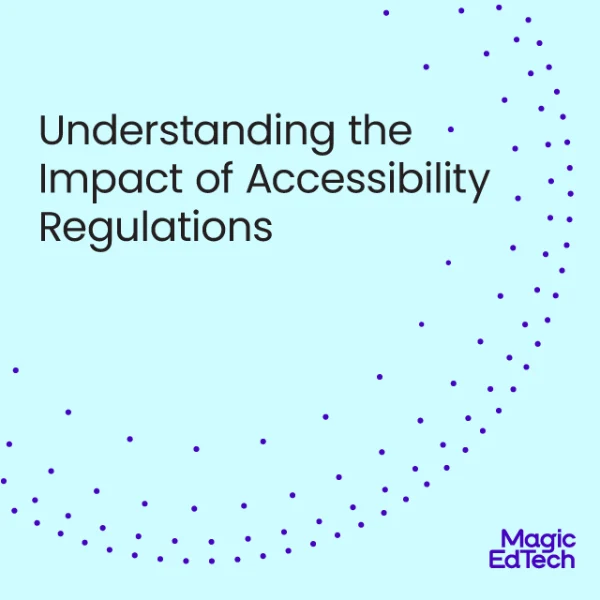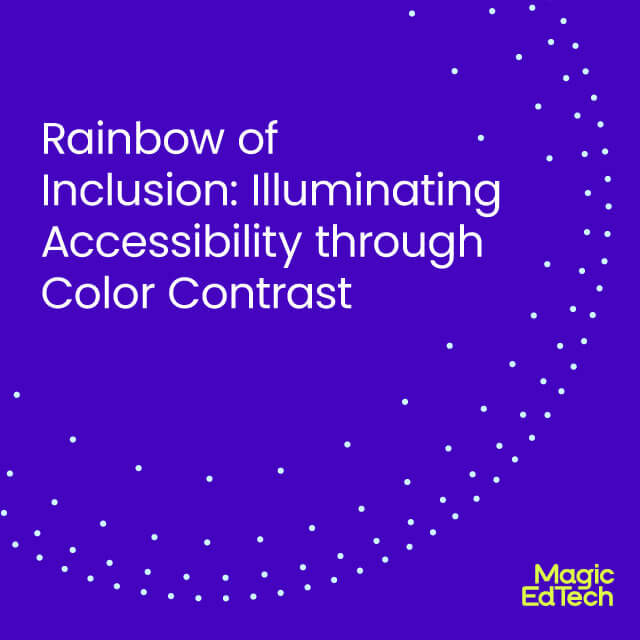Why Accessibility Audits Are Essential to Digital Inclusivity
- 8 September, 2023
- Reading Time: 4 mins
As technology continues to be an integral part of our lives, it’s essential to ensure that everyone, regardless of their abilities, can access and use digital materials and products. One way to achieve this goal is to understand the accessibility of a product through an audit.
What Is an Accessibility Audit?
An accessibility audit is a comprehensive assessment of digital materials and products to determine their level of accessibility. The primary objective is to identify and fix barriers that may prevent people with disabilities from using these digital assets effectively.
What Gets Covered During an Accessibility Audit?
Digital accessibility audit services are essential for websites, mobile apps, documents, and any other digital content.
Why is digital accessibility auditing necessary? We’ve listed a few reasons they are important.
- Inclusivity for All – Accessibility audits help make sure that everyone, including people with disabilities, can use and benefit from digital materials and products. This means that websites, apps, and documents are designed to be fair and inclusive, just like ramps and elevators make physical spaces accessible to all. By undertaking digital accessibility audit services, your teams can make sure no one is left out.
- Enhanced User Experience – When digital things are made with accessibility in mind, they often work better for everyone. For example, captions on videos not only help people who are deaf but also people who are in a noisy place and can’t hear well. Your accessibility audit can help create a better experience for everyone.
- Business Growth – People with disabilities are a big part of the population. By making digital things accessible, you open them up to a larger audience, which can be good for businesses and organizations. Also, fixing accessibility hiccups later can be more expensive and time-consuming than doing it right from the start. The right accessibility testing and audits catch problems early, saving time and money in the long run.
- Legal Compliance – In many regions, including the USA and the European Union, laws require digital assets to be accessible to people with disabilities. This is to make sure that companies and organizations do their part to include everyone. An accessibility audit helps them follow these laws.
How accessibility audits can support your goal of being compliant with the law.
Here are some key accessibility compliance laws for the United States and Europe:
United States
- Americans with Disabilities Act (ADA): The ADA prohibits discrimination against people with disabilities and requires that public accommodations, including websites and digital services offered by businesses, are accessible. ADA accessibility audits can help your digital resources comply with the set guidelines to ensure equal access.
- Section 508 of the Rehabilitation Act: Section 508 applies to federal agencies and requires that their electronic and information technology is accessible to people with disabilities, including employees and the public.
- Web Content Accessibility Guidelines (WCAG): While not a law itself, WCAG is a widely accepted set of guidelines for web accessibility. Many organizations in the USA adopt these guidelines as part of their accessibility efforts. WCAG accessibility audits are a common tool organizations use to ensure that their accessibility goals are met.
European Union (EU)
- European Accessibility Act (EAA): The EAA aims to improve the accessibility of a wide range of products and services, including ATMs, ticketing machines, smartphones, and e-commerce websites, across the EU.
- Equal Treatment Directive: This directive prohibits discrimination on the grounds of disability and requires EU member states to ensure equal treatment in areas such as employment, education, and access to goods and services, including digital services.
What are some keys to a Successful Accessibility Audit?
Before undertaking digital accessibility audit services, there are several key steps to consider.
1. Understand the Purpose: Determine why you’re conducting the audit, whether it’s for legal compliance or to improve user experience.
2. Assemble Your Team: Identify team members who will participate in the audit, including accessibility experts, designers, developers, and testers.
3. Define the Scope: Clearly outline what you will audit, such as a website, app, or document.
4. Familiarize Yourself with Standards: Study accessibility standards like WCAG to serve as your checklist during the audit.
5. Choose the Right Tools: Select the necessary tools and software for auditing, including automated and manual testing tools.
6. Document the Process: Create a plan and checklist to organize your audit, documenting specific tests and criteria.
7. Document Your Findings: Keep records of accessibility issues, noting their location, severity, and potential impact.
8. Prioritize and Plan Remediation: Prioritize issues based on severity and develop a plan for remediation.
9. Retest and Verify: After remediation, retest to ensure issues have been resolved.
10. Accessibility Statement: Consider creating an accessibility statement to communicate your commitment to accessibility.
11. Training and Awareness: Train your team on accessibility best practices and promote awareness.
12. Ongoing Monitoring: Regularly audit to ensure ongoing accessibility.
13. Continuous Improvement: Use audit results to improve accessibility efforts over time.
Accessibility audits are not a one-time effort but a continuous commitment to inclusivity. By following these steps and prioritizing accessibility, you can create digital materials and products that are accessible to everyone, making the digital world a more inclusive place.
Engage with our CPACC-certified experts at Magic EdTech to ensure that your digital accessibility audits are aligned with your overall accessibility and business goals. Having conducted accessibility audits for several organizations, we understand the nuances of getting materials and products compliant with global standards for accessibility. We also involve Persons with Disabilities (PwD) in accessibility testing services to ensure that digital assets are not just compliant, but actually usable by people with varied abilities.
Accessibility audits are a vital part of ensuring that the digital landscape is open and accessible to all, regardless of their abilities. They promote inclusivity, legal compliance, better user experiences, and cost-effective development while demonstrating a commitment to the well-being of all users.





